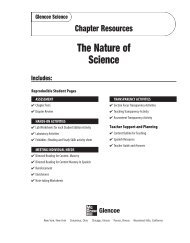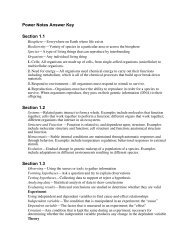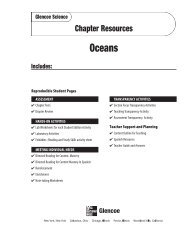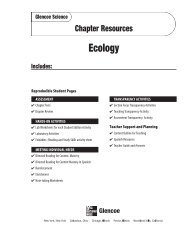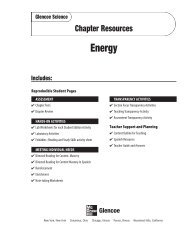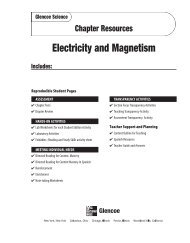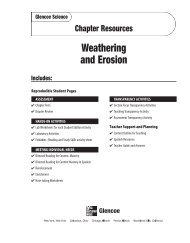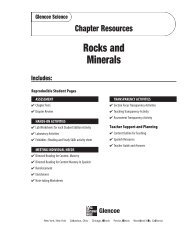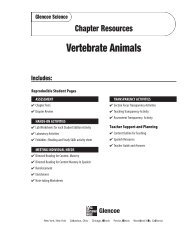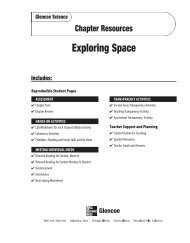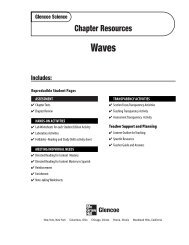Content Outline for Teaching - Potosi School District - Home
Content Outline for Teaching - Potosi School District - Home
Content Outline for Teaching - Potosi School District - Home
Create successful ePaper yourself
Turn your PDF publications into a flip-book with our unique Google optimized e-Paper software.
13<br />
<strong>Content</strong> <strong>Outline</strong><br />
<strong>for</strong> <strong>Teaching</strong><br />
Oceans<br />
Underlined words and<br />
phrases are to be filled<br />
in by students on the<br />
Note-taking Worksheet.<br />
Section 1<br />
Ocean Water<br />
A. Oceans are important because they provide homes to many<br />
organisms; provide resources such as food, salt, transportation; provide<br />
water <strong>for</strong> precipitation; and provide oxygen produced by ocean organisms.<br />
B. Billions of years ago oceans <strong>for</strong>med from volcanic water vapor that collected in the<br />
atmosphere and then fell as torrential rains.<br />
C. Ocean water contains many dissolved substances that make it taste salty.<br />
1. Salinity—measure of the amount of salts dissolved in seawater<br />
2. Gases enter the ocean from the atmosphere.<br />
a. Oxygen—enters from the atmosphere and photosynthesis of ocean organisms<br />
b. Carbon dioxide—enters from the atmosphere and from respiration of ocean<br />
organisms; <strong>for</strong>ms carbonic acid, which controls ocean acidity<br />
c. Nitrogen—provides nutrients <strong>for</strong> plants and is used in plant and animal tissues<br />
D. Water temperature and pressure vary with depth.<br />
1. Three layers of water temperature<br />
a. Warm surface layer—found near the equator<br />
b. Thermocline—begins at about 200 m with temperatures rapidly dropping<br />
with increasing depth<br />
c. Deep-water layer—extremely cold<br />
2. Pressure or <strong>for</strong>ce per unit area increases about 1 atmosphere (atm) <strong>for</strong> every 10 m<br />
increase in depth.<br />
Discussion Question<br />
How did the oceans <strong>for</strong>m? Water vapor from volcanoes collected in the atmosphere and<br />
then fell as rain.<br />
Oceans 39




